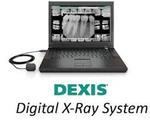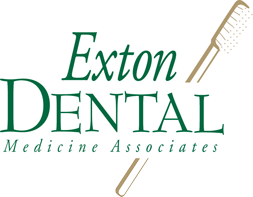Advanced Technologies
Digital Radiography
 Digital x-rays are faster than conventional x-rays, and they are more comfortable for you. They also aid us to accurately diagnose your oral health needs. All with up to 90% less radiation exposure! With no chemical processing needed, digital technology helps us do our part to keep the environment safe, too. The dental x-ray image can be viewed instantly on our computer screen, giving the doctor and the patient an opportunity to discuss findings and treatment.
Digital x-rays are faster than conventional x-rays, and they are more comfortable for you. They also aid us to accurately diagnose your oral health needs. All with up to 90% less radiation exposure! With no chemical processing needed, digital technology helps us do our part to keep the environment safe, too. The dental x-ray image can be viewed instantly on our computer screen, giving the doctor and the patient an opportunity to discuss findings and treatment.
Soft Tissue Laser
 The diode laser represents the latest advance in laser technology. It is a surgical instrument that is reliable, portable, and powerful. It provides quick, precise dental surgeries. It also results in greatly reduced post-operative pain. Laser therapy has a broad range of applications, which includes cosmetic gum tissue reduction, and more exact preparations when providing our patients with their ideal smile. We can use the laser to recontour gum lines, perform tooth reshaping, treat canker sores and fever blisters, remove suspicious lesions for biopsy, and more. Laser dentistry is more comfortable than traditional dental surgery. Because the laser seals and sterilizes tissue as it goes, there’s minimal bleeding and no need for stitches. Procedure and recovery time are fast, and most patients resume their normal activities quickly following laser surgery. Many patients report that they feel virtually no discomfort during or after treatment with our soft-tissue laser.
The diode laser represents the latest advance in laser technology. It is a surgical instrument that is reliable, portable, and powerful. It provides quick, precise dental surgeries. It also results in greatly reduced post-operative pain. Laser therapy has a broad range of applications, which includes cosmetic gum tissue reduction, and more exact preparations when providing our patients with their ideal smile. We can use the laser to recontour gum lines, perform tooth reshaping, treat canker sores and fever blisters, remove suspicious lesions for biopsy, and more. Laser dentistry is more comfortable than traditional dental surgery. Because the laser seals and sterilizes tissue as it goes, there’s minimal bleeding and no need for stitches. Procedure and recovery time are fast, and most patients resume their normal activities quickly following laser surgery. Many patients report that they feel virtually no discomfort during or after treatment with our soft-tissue laser.
Intraoral Camera
 The intra-oral camera makes going to the dentist easier for both the patient and the dental health provider. Offices that use intra-oral cameras allow patients to be more interactive in the exam process, which provides patients with a greater sense of understanding and responsibility about personal dental health. Although a traditional visual inspection of the teeth may have sufficed in the past, technology has made it possible for dentists and patients to reap many more benefits from each health exam.
The intra-oral camera makes going to the dentist easier for both the patient and the dental health provider. Offices that use intra-oral cameras allow patients to be more interactive in the exam process, which provides patients with a greater sense of understanding and responsibility about personal dental health. Although a traditional visual inspection of the teeth may have sufficed in the past, technology has made it possible for dentists and patients to reap many more benefits from each health exam.
The intra-oral camera is not just a diagnostic tool, but it also serves as an educational one too. In the past, dentists have struggled to explain dental decay and other health problems to patients. Most people cannot see well into their own mouths, which leaves dentists to drawing diagrams or using props to attempt to explain what is going on in the mouth of their patients.
With the intra-oral camera the patient sees exactly what the dentist sees on an in-office screen. If necessary, the dentist can pause on a particular tooth or area of the mouth to point out problems and explain possible treatment options. This also frees the patient to ask questions and become a part of the examination process. When dentists can point out specific places on the actual teeth that are decaying, patients may have a better idea of how home hygiene practices and brushing techniques are affecting them.



